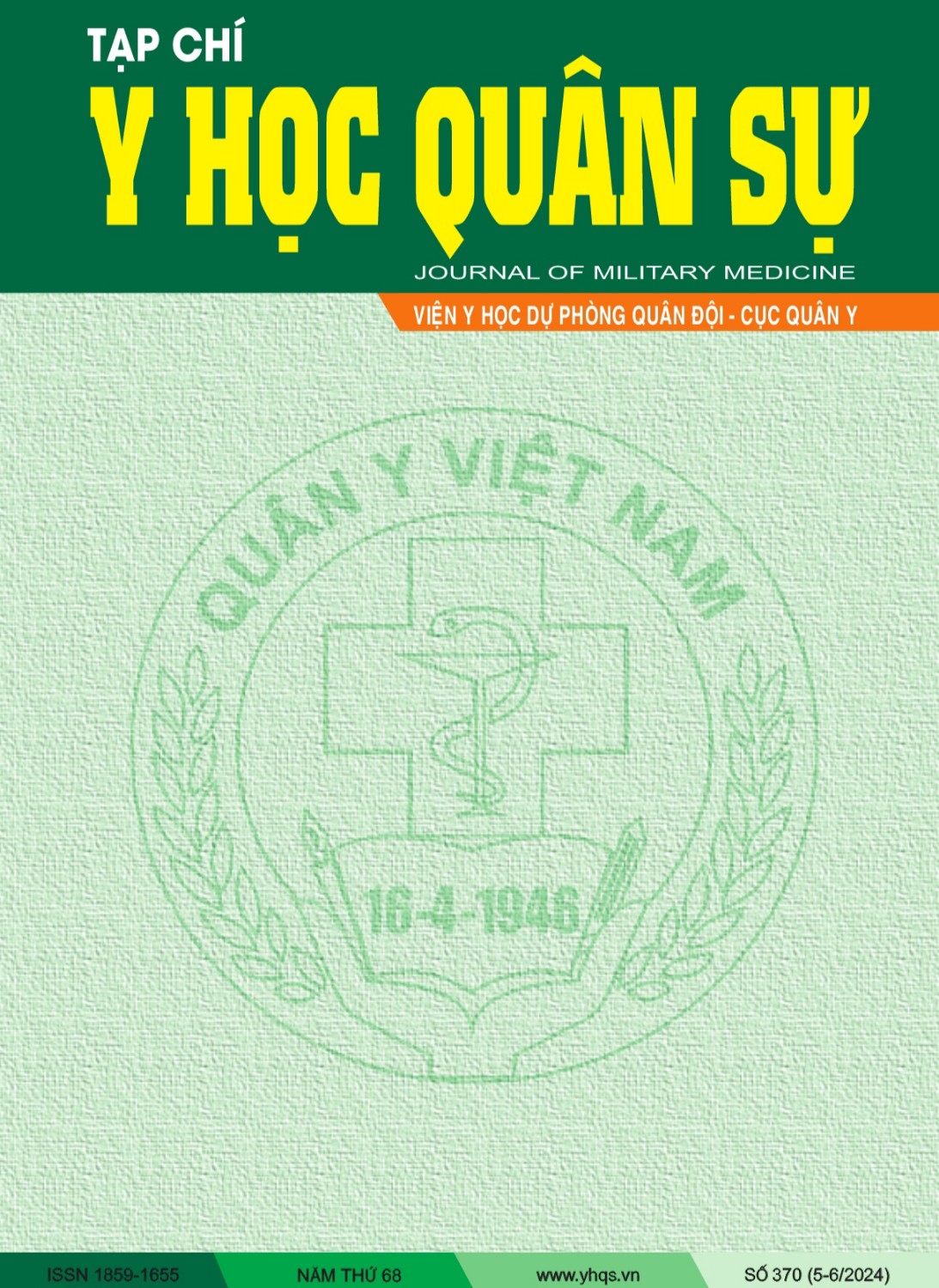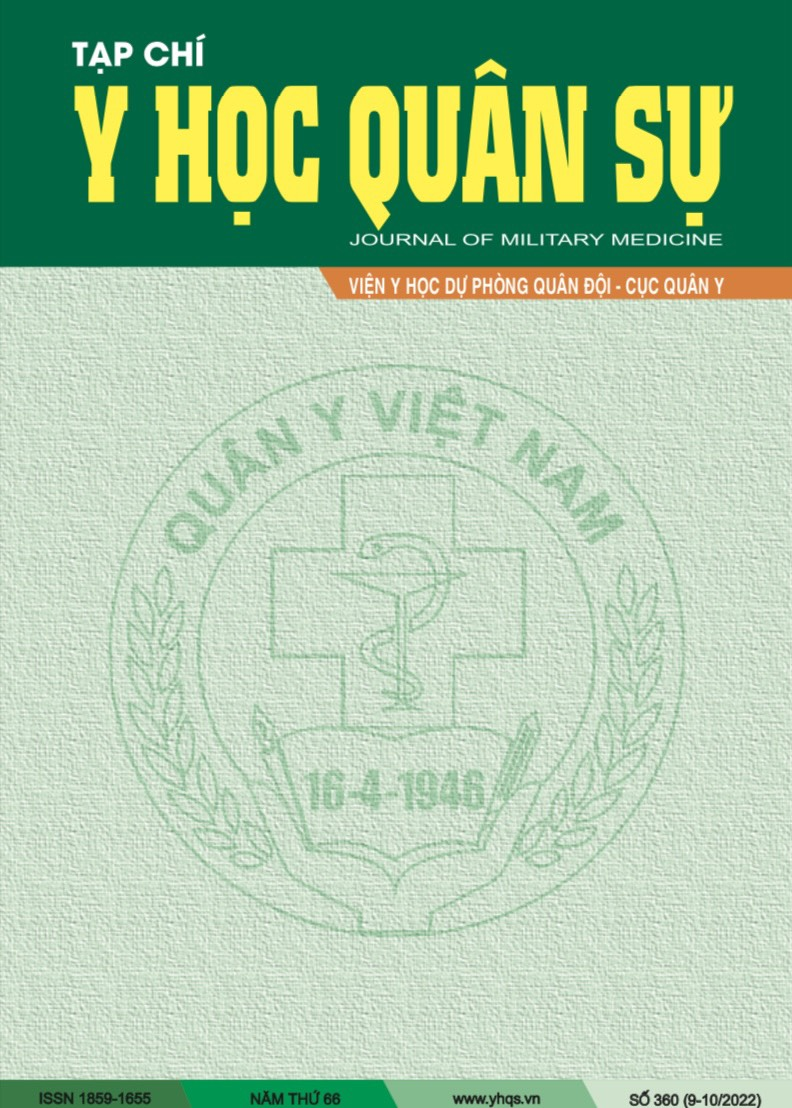NGHIÊN CỨU MỘT SỐ ĐẶC ĐIỂM CỦA VÉC-TƠ TRUYỀN BỆNH SỐT RÉT VÀ SỐT XUẤT HUYẾT TẠI XÃ BÙ GIA MẬP, HUYỆN BÙ GIA MẬP, TỈNH BÌNH PHƯỚC
DOI:
https://doi.org/10.59459/1859-1655/JMM.383Từ khóa:
Bù Gia Mập, véc-tơ sốt rét, véc-tơ sốt xuất huyếtTóm tắt
Mục tiêu: Nghiên cứu thành phần loài, đặc điểm phân bố và tập tính hoạt động của véc-tơ truyền bệnh sốt rét và sốt xuất huyết Dengue tại xã Bù Gia Mập.
Đối tượng và phương pháp: Nghiên cứu thực nghiệm có phân tích bằng phương pháp thu thập muỗi cái trưởng thành thuộc giống Anopheles và muỗi cái trưởng thành, bọ gậy thuộc giống Aedes; véc-tơ sốt rét tại sinh cảnh rừng và véc-tơ sốt xuất huyết tại sinh cảnh làng. Số liệu thu thập tại xã Bù Gia Mập, huyện Bù Gia Mập, tỉnh Bình Phước, tháng 10 năm 2023.
Kết quả: Tại sinh cảnh rừng, thu được 8 loài Anopheles, trong đó An. dirus chiếm số lượng cao nhất (53,69%), tiếp đến là An. maculatus (16,27%) và An. minimus (14,46%). Loài An. dirus có tập tính ưa thích đốt người (74,61%) trong suốt khung giờ từ 18-24 giờ với mật độ cao (2,25-8,88 con/người/giờ), đốt mồi cả trong và ngoài nhà, ưa đốt ngoài nhà hơn trong nhà. Tại sinh cảnh làng, xuất hiện cả hai véc-tơ truyền bệnh sốt xuất huyết, trong đó, Ae. aegypti có chỉ số mật độ cao hơn 0,5 con/nhà (DI = 0,92), Ae. albopictus có chỉ số BI cao hơn 30 (BI = 62). Hai chỉ số cho thấy nguy cơ lan truyền bệnh sốt xuất huyết tại khu vực nghiên cứu. Cần có các biện pháp kiểm soát véc-tơ và phòng chống muỗi đốt để đề phòng sốt rét, sốt xuất huyết cho bộ đội và nhân dân trên địa bàn.
Tài liệu tham khảo
Bộ Y tế (2014), Hướng dẫn giám sát và phòng, chống bệnh sốt xuất huyết Dengue, Quyết định số 3711/QĐ-BYT.
Chareonviriyaphap T, Prabaripai A, Bangs M.J, Aum-Aung B (2003), “Seasonal abundance and blood feeding activity of Anopheles minimus Theobald (Diptera: Culicidae) in Thailand”, J Med Entomol, 40 (6): 876-81.
Chinh V.D, Masuda G, Hung V.V et al (2019), “Prevalence of human and non-human primate Plasmodium parasites in anopheline mosquitoes: a cross-sectional epidemiological study in Southern Vietnam”, Trop Med Health, 47, 9. https://doi.org/10.1186/s41182-019-0139-8.
Chung Thuy Ngo, Gregor Dubois, Véronique Sinou, Daniel Parzy, Hong Quang Le, Ralph E Harbach, Sylvie Manguin (2014), “Diversity of Anopheles mosquitoes in Binh Phuoc and Dak Nong Provinces of Vietnam and their relation to disease”, Parasit Vectors, 7: 316.
Do Manh C, Beebe N.W, Van V.N, Quang T.L, Lein C.T, Nguyen D.V et al (2010), “Vectors and malaria transmission in deforested, rural communities in north-central Vietnam”, Malar J., 9: 259.
Dutta P, Bhattacharyya D.R, Khan S.A, Sharma C.K, Mahanta J (1996), “Feeding patterns of Anopheles dirus, the major vector of forest malaria in north east India”, Southeast Asian J Trop Med Public Health, 27 (2): 378-81.
Đỗ Văn Nguyên, Nguyễn Xuân Quang (2014), “Đặc điểm phân bố và hoạt động của hai loài muỗi Ae. aegypti và Ae. albopictus tại tỉnh Bình Định”, Hội nghị khoa học toàn quốc về sinh thái và tài nguyên sinh vật lần thứ 6. 1534-1539.
Hawley W.A (1988), “The biology of Aedes albopictus”, J Am Mosq Control Assoc 4(Suppl 1): 1-40.
Higa Y, Tsuda Y, Tuno N, Takagi M (2001), “Preliminary field experiments on exophagy of Aedes albopictus (Diptera: Culicidae) in peridomestic habitat”, Med Entomol Zool, 52: 105-116
Higa Y, Yen N.T, Kawada H, Son T.H, Hoa N.T, Takagi M (2010), “Geographic distribution of Aedes aegypti and Aedes albopictus collected from used tires in Vietnam”, J Am Mosq Control Assoc, Mar, 26 (1): 1-9. doi: 10.2987/09-5945.1. PMID: 20402344.
Kuno G (1997). Factors influencing the transmission of dengue viruses. In: Gubler DJ, Kuno G, eds. Dengue and dengue hemorrhagic fever, New York: CAB International. p 61-88.
Mahmoud Kamal, Mohamed A Kenawy, Magda Hassan Rady, et al (2018), “Mapping the global potential distributions of two arboviral vectors Aedes aegypti and Ae. albopictus under changing climate”, PLoS ONE, 13: e0210122.
Manguin S, Kengne P, Sonnier L, Harbach RE, Baimai V, Trung H.D, Coosemans M (2002), “SCAR markers and multiplex PCR based identification of isomorphic species in the Anopheles dirus complex in southeast Asia”, Med Vet Entomol, 2002; 16: 46-54.
National Institute of Malariology, Parasitology and Entomology (NIMPE). Keys to identify the Anopheles mosquitoes (adults-pupae-larvae). Hanoi: Department of Entomology-National Institute of Malariology, Parasitology and Entomology; 2008.
Nguyễn Văn Tuấn, Hồ Đình Trung, Vũ Đức Chính và cộng sự (2013), “Thành phần loài và phân bố các loài muỗi Anopheles ở vùng sốt rét P. fanciparum kháng Artemisinin quanh khu vực Vườn Quốc gia Bù Gia Mập tỉnh Bình Phước và Đắk Nông”, Tạp chí phòng chống bệnh sốt rét và các bệnh kí sinh trùng, 2013, 3:66-72.
Tangena J.A.A, Thammavong P, Hiscox A, Lindsay S.W, Brey P.T (2015), “The human-baited double net trap: an alternative to human landing catches for collecting outdoor biting mosquitoes in Lao PDR”, PLoS ONE, 2015; 10: e0138735.
Trung H.D, Bortel W.V, Sochantha T, Keokenchanh K, Briet O.J, Coosemans M (2005), “Behavioural heterogeneity of Anopheles species in ecologically different localities in Southeast Asia: a challenge for vector control”, Trop Med Int Health, 2005; 10 (3): 251-62.
Nguyen T.Q, Nguyen M.D, Pham V.X, Ro H.M, Edstein M.D, Chow W.K, Martin N.J, Hertz J.C, Motoki M.T (2021), “Entomological survey in two communes with residual malaria transmission in Gia Lai Province in the central highlands of Vietnam”, Malar J, 2021 Oct 16; 20 (1): 403. doi: 10.1186/s12936-021-03941-6. PMID: 34656112; PMCID: PMC8520203.
Van Bortel W, Trung H.D, Hoi L.X, Van Ham N, Van Chut N, Luu N.D, et al (2010), “Malaria transmission and vector behaviour in a forested malaria focus in central Vietnam and the implications for vector control”, Malar J, 2010, 9: 373.
Vũ Đức Hương (1997), Bảng định loại muỗi họ Culicidae đến giống và bảng định
loại muỗi Aedes thường gặp ở Việt Nam. Viện Sốt rét, Kí sinh trùng và Côn trùng Trung ương, Nhà xuất bản Y học, tr. 17-35.
Vythilingam I, Phetsouvanh R, Keokenchanh K, Yengmala V, Vanisaveth V, Phompida S, Hakim SL (2003), “The prevalence of Anopheles (Diptera: Culicidae) mosquitoes in Sekong Province, Lao PDR in relation to malaria transmission”, Trop Med Int Health, 2003, 8 (6): 525-35.
WHO (2019), Guidelines For Malaria Vector Control, World Health Organization, http://www.jstor.org/stable/resrep27918.
WHO (2020), World malaria report 2020: 20 years of global progress and challenges Geneva: World Health Organization.
World Health Organization (2007), Anopheles species complexes in South and South East Asia. SEARO Technical Publication. No. 57. 102 pp. <http://apps.searo.who.
int/pds_docs/B2406.pdf>.
Tải xuống
Đã Xuất bản
Cách trích dẫn
Số
Chuyên mục
Chấp nhận đăng 12-03-2024
Ngày xuất bản 17-06-2024



